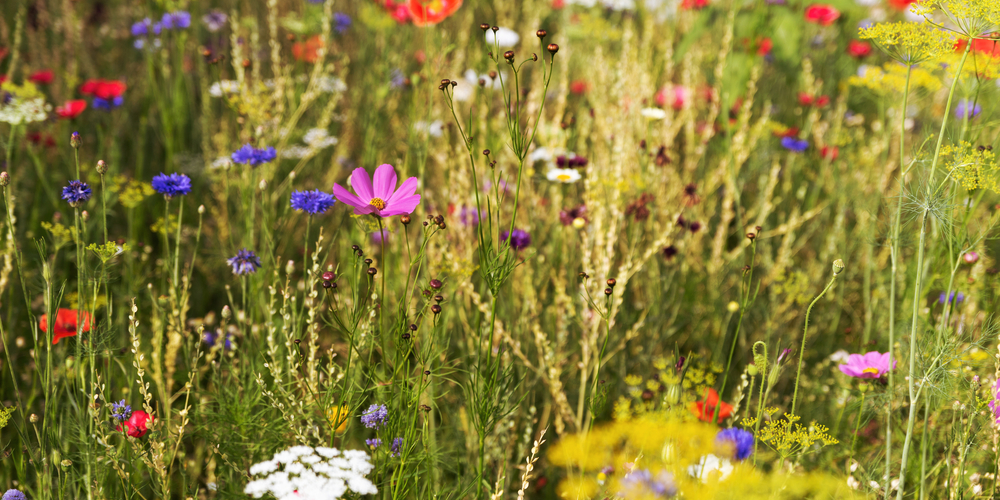Indiana is a warm and mild cold state situated in USDA zones 5b, 6a, and 6b. With such a climate, growing flowers in Indiana is not a great challenge. Even so, if you are a flower enthusiast considering adding wildflowers to your lawn, you need to identify the best planting time.
Planting at the right time is the best way to ensure that the flowers bloom at the right time too.
Most wildflowers boast medium to large, showy flowers that beautify a lawn and add an aromatic scent to your entire home. This article will cover when and how to plant wildflower seeds in Indiana.
Best time to plant wildflowers in Indiana

Wildflowers typically bloom in summer. That said, Indiana gardeners looking to create a glorious vista with wildflowers, the best time to plant these flowers is in spring after the danger of frost.
Literally, the wildflower planting season largely depends on the planting site and specific weather conditions in your planting zone. In Indiana, wildflowers’ planting timetable is based on seasonal precipitation in a given area, not by temperature fluctuations.
While wildflowers can be planted in spring or fall, for Indiana, the winters are usually very extreme, thus discouraging fall gardening while encouraging spring planting. Sometimes, depending on your planting zone, wildflowers may be affected if the spring gets too warm, but that is not a great issue because there are remedies for protecting plants.
As for planting, adequate rainfall and medium warm spring temperatures facilitate quicker germination and growth of seedlings. If it rains heavily after seeds have germinated and then rain stops for several days, you will need to do irrigation to keep the ground wet, so the seedlings do not die.
You can also choose to plant your wildflower seeds in late fall. Most seeds will not germinate when the soil temperature is below 70 degrees Fahrenheit – they will remain dormant during the few days of harsh cold weather, and germination will immediately start when spring rolls around. If you opt to plant in the fall, do not sow exotic or domesticated wildflower seeds during this time because they will be killed by the intensive coldness. In other words, only plant native wildflower seeds which can withstand the weather conditions.
Regardless of wherever you decide to plant your wildflower seeds, make sure that you don’t make your wildflowers try to grow through mulch.
Wildflower seeds need adequate warmth to grow, and whenever they sense a fall in temperature and water supply, they start to shrink as they prepare to go inactive until the soil gets warm enough to sprout again.
Planting wildflower seeds
Before planting, you need to plan how and where you will plant the seeds. Choose a spot in your garden that gets sunlight for at least six hours every day. Using herbicides, spray the spotted area for all the existing plants to die. Clear that spot by digging out all the existing weeds and plants and preparing the soil into finer particles. Use a rake to remove the dirt on the dug-up soil and level the fine soil to form a flat but slightly raised soil hip.
Mix the sand with the wildflower seeds to enhance the visibility of the tiny seeds. You will then scatter the seeds on the prepared soil and be cautious not to bury them deep in the soil. You can opt to gently compress the seeds into the soil by either walking on them or using a flat board or hands to pay the seeds to the soil without burying them.
Remember to water the garden, so the soil remains relatively moist until seeds germinate and seedlings grow up to six inches tall. From there, they will depend on rainfall to survive. However, if it fails to rain for several weeks, you should irrigate the wildflower garden occasionally to keep it moist. Too much soil dryness may cause the plants to dry up and die.
When to plant wildflower seeds in Indiana: Conclusion
Planting wildflowers in Indiana is an easy and undemanding task if you consider the precipitations and other weather elements in your planting zone. For Indiana gardeners, panting in early spring is always the best time if you wish to see the flowers bloom in summer.
Make sure the seedlings are adequately watered to develop enough roots that will aid its support. Hopefully, you will find this post helpful in your search for when to plant wildflowers in Indiana.
